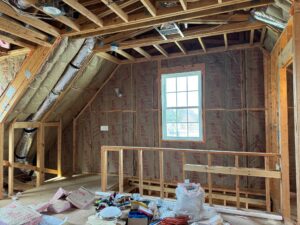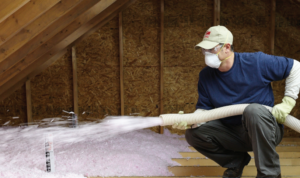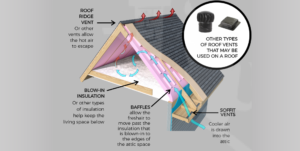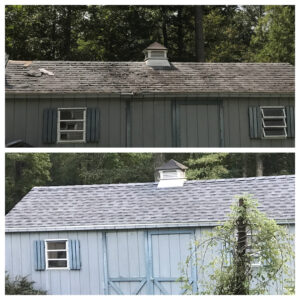So you’re in the market for a new house—congrats! But hold on before you start daydreaming about color schemes and backyard BBQs. Let’s discuss something super important that might not be on your radar: insulation.
Yep, that fluffy stuff in the walls and attic can affect your comfort and wallet. Let’s explore what you should know.
The Unsung Hero: Insulation
Insulation is like the unsung hero of your house. It keeps you warm in the winter and cool in the summer without you even realizing it. Good insulation can lower energy bills, reduce noise, and make your home more comfortable. Sounds dreamy.
The Home Inspector: Your New Best Friend
When you’re getting serious about a house, remember, you’re not alone. You’ll want a thorough inspection, and I don’t mean just checking if the doors squeak or the faucets leak. You must find a home inspector who also completes a home energy audit. They’ll be your guide, your ally in this process.
An energy audit is like a check-up for your house, pinpointing where it’s losing energy (and money!). They’ll use tools like infrared cameras to spot gaps and leaks that aren’t visible to the naked eye.
This way, you’ll get a clear picture of the insulation situation and know if any upgrades are needed. It’s like having X-ray vision for your new home—cool, right?
More Isn't Necessarily Better
A lot of folks think that more insulation is always better. But that’s not quite the case! Just because you take a peek in the attic and see a ton of insulation doesn’t mean you’re all set and good to go.
Overdoing it can lead to headaches, like moisture problems, added weight, and even structural damage from the material shifting around.
So, while more isn’t always better, remember that adequately installed insulation definitely is. It’s not about quantity; it’s about balance and quality. And now, with this knowledge, you’re in control of your home’s comfort and energy efficiency.
Types of Insulation: One Size Doesn't Fit All
Not all insulation is created equal. There are several types, including fiberglass, cellulose, foam board, spray foam, and more. Each has pros and cons and is suitable for different house parts.
- Fiberglass: Common and affordable, great for attics and walls. Read More
- Cellulose: Made from recycled paper, it’s eco-friendly but tricky to install.
- Foam Board: Provides high insulation value but can be pricey.
- Spray Foam: Expands to fill gaps, which is great for hard-to-reach spots but can be expensive. Read More
Your home energy audit will help determine the best insulation for your situation. So, don’t just wing it! Take charge, make informed decisions, and ensure your home is the best it can be.
The R-Value: The Magic Number
Have you ever heard of R-Value? It’s a measure of insulation’s ability to resist heat flow. A higher R-value means better insulation. Different parts of the house require different R-Values, and your climate plays a significant role in what’s needed.
- Attics: R-38 to R-60
- Walls: R-13 to R-21
- Floors: R-25 to R-30
Check local building codes for specific requirements in your area, and let your home inspector guide you.
DIY or Pro?
Do some insulation work yourself? It can be a great way to save money, but be careful. Improper installation can cause more problems than it solves. If you’re handy and do your research, go for it. Otherwise, consider hiring a pro to ensure the job’s done right. Contact Zhe Industries today, Hampton Roads only Certified Energy Expert®.
Final Thoughts
Buying a house is a huge milestone, and you want to make sure you’re investing in a home that’s comfortable, energy-efficient, and in good shape. Insulation might not be the most glamorous topic, but it’s one of the most important.
So, team up with a great home inspector who does energy audits, get the scoop on the types of insulation, and make sure you understand the R-value. Your future self (and your energy bills) will thank you!
Happy house hunting!







